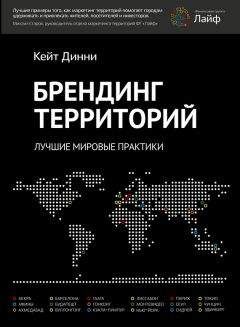89. Garrett-Jones, S., Gross, M., Kerr, G., Kotevski, S. and Zaeemdan, S. (2007), Cities of innovation: Exploring the role of local community organisations in ‘constructing advantage’, paper presented at the Australian and New Zealand Academy of Management Conference, 4–7 December Sydney, Australia.
90. Gemeente Den Haag (Municipality of The Hague) (2008), Economische betekenis Internationale bedrijven en organisaties in Haaglanden (Economic impact of international corporations and organisations in Haaglanden region of Greater The Hague), The Hague: Decisio BV and Bureau Louter.
91. Gerhardt, W. (2008), Prosumers: A new growth opportunity, Cisco Internet Business Solutions Group, available at: http://www.cisco.com/web/about/ac79/docs/wp/Prosumer_VS2_POV_0404_FINAL.pdf (accessed 5 January 2010).
92. Gilmore, F. (2002), A country – Can it be repositioned? Spain – The success story of country branding, Journal of Brand Management, Vol. 9, Nos 4–5, pp. 281–293.
93. Govers, R. and Go, F.M. (2009), Place Branding: Glocal, Virtual and Physical Identities, Constructed, Imagined and Experienced, Palgrave Macmillan, Basingstoke, United Kingdom.
94. Grabow, В. (1998), Stadtmarketing: Eine Kritische Zwischenbilanz, Deutsches Institut fur Urbanistik Berlin, Germany.
95. Green, B.C. and Chalip, L. (1998), Sport tourism as the celebration of subculture, Annals of Tourism Research, Vol. 25, No. 2, pp. 275–291.
96. Greenberg, M. (2000), Branding cities: A social history of the urban lifestyle magazine, Urban Affairs Review, Vol. 36, No. 2, pp. 228–263.
97. Greenley, G.E. and Foxall, G.R. (1997), Multiple stakeholder orientation in UK companies and the implications for company performance, Journal of Management Studies, Vol. 34, No. 2, pp. 259–284.
98. Guhathakurta, S. and Stimson, R.J. (2007), What is driving the growth of new ‘sunbelt’ metropolises? Quality of life and urban regimes in Greater Phoenix and Brisbane-South East Queensland Region, International Planning Studies, Vol. 12, No. 2, pp. 129–152.
99. Hall, C.M., Sharpies, L., Mitchell, R., Macionis, N. and Cambourne, B. (eds) (2003), Food Tourism Around the World: Development, Management and Markets, Butterworth-Heinemann, Oxford, United Kingdom.
100. Hankinson, G. (2001), Location branding: A study of the branding practices of 12 English cities, Journal of Brand Management, Vol. 9, No. 2, pp. 127–142.
101. Hankinson, G. (2004), Relational network brands: Towards a conceptual model of place brands, Journal of Vacation Marketing, Vol. 10, No. 2, pp. 109–121.
102. Hankinson, G. (2005), Destination brand images: A business tourism perspective, Journal of Services Marketing, Vol. 19, No. 1, pp. 24–32.
103. Hankinson, G. (2007), The management of destination brands: Five guiding principles based on recent developments in corporate branding theory, Journal of Brand Management, Vol. 14, No. 3, pp. 240–254.
104. Hankinson, G. (2009), Managing destination brands: Establishing a theoretical foundation, Journal of Marketing Management, Vol. 25, Nos I–2, pp. 97–115.
105. Hankinson, G. and Cowking, R. (1995), What do you really mean by a brand? Journal of Brand Management, Vol. 3, No. 1, pp. 43–50.
106. Harmaakorpi, V., Kari, K. and Parjanen, S. (2008), City design management as a local competitiveness factor, Place Branding and Public Diplomacy, Vol. 4, No. 2, pp. 169–181.
107. Harrisinteractive.com (2009), Internet users now spending an average of 13 hours a week online, available at: http://news.harrisinteractive.com/profiles/investor/ResLibraryView.asp?BzlD=1963&Category=1777&ResLibrarylD=35164 (accessed 2 January 2010).
108. Hatch, M. and Schultz, M. (1997), Relations between organisational culture, identity and image, European Journal of Marketing, Vol. 31, No. 5, pp. 356–365.
109. Hayden, D. (1997), The Power of Place: Urban Landscapes as Public History, MIT Press, Cambridge, Massachusetts, United States.
110. Healey, R. (2004), Creativity and urban governance, Policy Studies, Vol. 25, No. 2, pp. 87–102.
111. Heldt-Cassel, S. (2003), Att tillaga en region (In English: The taste of the Archipelago. Representations and practises in regional food projects), Geografiska Regionstudier, Vol. 56. Uppsala: Uppsala University.
112. Heritage Foundation (2010), Index of Economic Freedom, available at: http://www.heritage.org/Index/ (accessed 2 June 2010).
113. Hernandez, J. (2008), Car-free streets, a Colombian export, inspire debate, New York Times, June 24, p. 6.
114. Heston R. (2006), Design for Ecological Democracy, MIT Press, Cambridge, United States,
115. Holman, N. (2008), Community participation: Using social network analysis to improve developmental benefits, Environment and Planning C: Government and Policy, Vol. 26, No. 3, pp. 525–543.
116. Hong Kong General Chamber of Commerce (2003), Developing Hong Kong’s creative industries – An action-oriented strategy, available at: http://www.chambenorg.hk/member-area/chamber_view/others/Creative_industries.pdf (accessed 18 February 2010).
117. Hong Kong Information Services Department (2008), Asia’s world city, available at: http://www.info.gov.hk/info/sar5/easia.htm (accessed 3 February 2010).
118. Hong Kong Information Services Department (2009), Hong Kong: The facts (tourism), available at: http://www.gov.hk/en/about/abouthk/factsheets/docs/tourism.pdf (accessed 17 January 2010).
119. Hooi, N.S. (2009), Air Asia named world’s best low-cost carrier by Skytrax, 4 April, available at: http://thestarcom.my/news/story.asp?file=/2009/4/4/nation/20090404163724&sec=nation (accessed 27 January 2010).
120. Hospers, G.J. (2003), Creative cities: Breeding places in the knowledge economy, Knowledge, Technology, & Policy, Vol. 16, No. 3, pp. 143–162.
121. Hospers, G.J. (2009a), Citymarketing in Perspectief (in Dutch), IVIO, Lelystad. The Netherlands.
122. Hospers, G.J. (2009b), Lynch, Urry and city marketing: Taking advantage of the city as a built and graphic image, Place branding and Public Diplomacy, Vol. 5, No. 3, pp. 226–233.
123. Hurme, R. (2001), Online PR: Emerging organisational practice, Corporate Communications: An International Journal, Vol. 6, No. 2, pp. 71–75.
124. Ilbery, B. and Kneafsey, M. (2000), Producer construction of quality in regional speciality food production: A case study from South West England, Journal of Rural Studies, Vol. 16, No. 2, pp. 217–230.
125. Illroots (2008), Sean ‘Diddy’ Combs featured in NYC’s Tourism Campaign ‘Just Ask The Locals’, available at: http://illroots.com/2008/04/28/sean-diddy-combs-featured-in-nycs-tourism-campaign-just-ask-the-locals (accessed 24 January 2010).
126. Ind, N. and Riondino, C.M. (2001), Branding on the web: A real revolution? Journal of Brand Management, Vol. 9, No. 1, pp. 8–19.
127. lnsch, A. (in press), Managing residents’ expectations and satisfaction with city life: Application of importance-satisfaction analysis, Journal of Town and City Management, Vol. 1, No. 2.
128. Insch, A. and Florek, M. (2008), A great place to live, work and play: Conceptualising place satisfaction in the case of a city’s residents, Journal of Place Management and Development, Vol. I, No. 2, pp. 138–149.
129. Insch, A. and Florek, M. (2010), Place satisfaction of city residents: Findings and implications for city branding, in Ashworth, G. and Kavaratzis, M. (eds), Towards Effective Place Brand Management: branding European Cities and Regions, Edward Elgan Cheltenham, United Kingdom.
130. Interbrand (2009), Allost Valuable Global Brands, available at: http://www.interbrand.com (accessed 30 September 2009).
131. International Congress and Convention Association (2008), www.iccaworld.com
132. IRIS Research (2004), Wollongong Image Study, 2004: Measuring External Perceptions of Wollongong, Innovation Campus, University of Wollongong, Australia.
133. Jain, К. (1988), Wooden houses, in Michell, G. and Shah, S. (eds), Ahmadabad, Marg Publications, Mumbai, India.
134. Jansson, J. and Power, D. (2006), Image of the City: Urban Branding as Constructed Capabilities in Nordic City Regions, Research Report, Nordic Innovation Centre, Oslo, Noway, available at: http://www.nordicinnovation.net/Jmg/image_of_the_city_-_web.pdf (accessed 2 June 2010).
135. Jinnai, H. (1995), Tokyo: A Spatial Anthropology, University of California Press, Berkeley, United States.
136. Kajikawa, A., Masuda, Y., Sato, M., Takahashi, N. and Ojima, T. (2005), A field study on revival conditions of covered rivers in Tokyo’s 23 wards, Journal of Asian Architecture and Building Engineering, Vol. 4, No. 2, pp. 489–494.
137. Kapferer, J.-N. (2008), The New Strategic Brand Management Creating and Sustaining Brand Equity LongTerm, Fourth edition, Kogan Page, London, United Kingdom.
138. Kavaratzis, M. (2004), From city marketing to city branding: Towards a theoretical framework for developing city brands, Place Branding, Vol. 1, No. 1, pp. 58–73.
139. Kavaratzis, M. (2009a), Cities and their brands: Lessons from corporate branding, Place Branding and Public Diplomacy, Vol. 5, No. 1, pp. 26–37.
140. Kavaratzis, M. (2009b), What can we learn from city marketing practice? European Spatial Research and Policy, Vol. 16, No. 1, pp. 41–58.
141. Kavaratzis, M. and Ashworth, G.J. (2006), City branding: An effective assertion of identity or a transitory marketing trick? Place Branding, Vol. 2, No. 3, pp. 183–194.
142. Kavaratzis, M. and Ashworth, G.J. (2007), Partners in coffeeshops, canals and commerce: Marketing the city of Amsterdam, Cities, Vol. 24, No. 1, pp. 16–25.

![Rick Page - Make Winning a Habit [с таблицами]](https://cdn.my-library.info/books/no-image.jpg)


